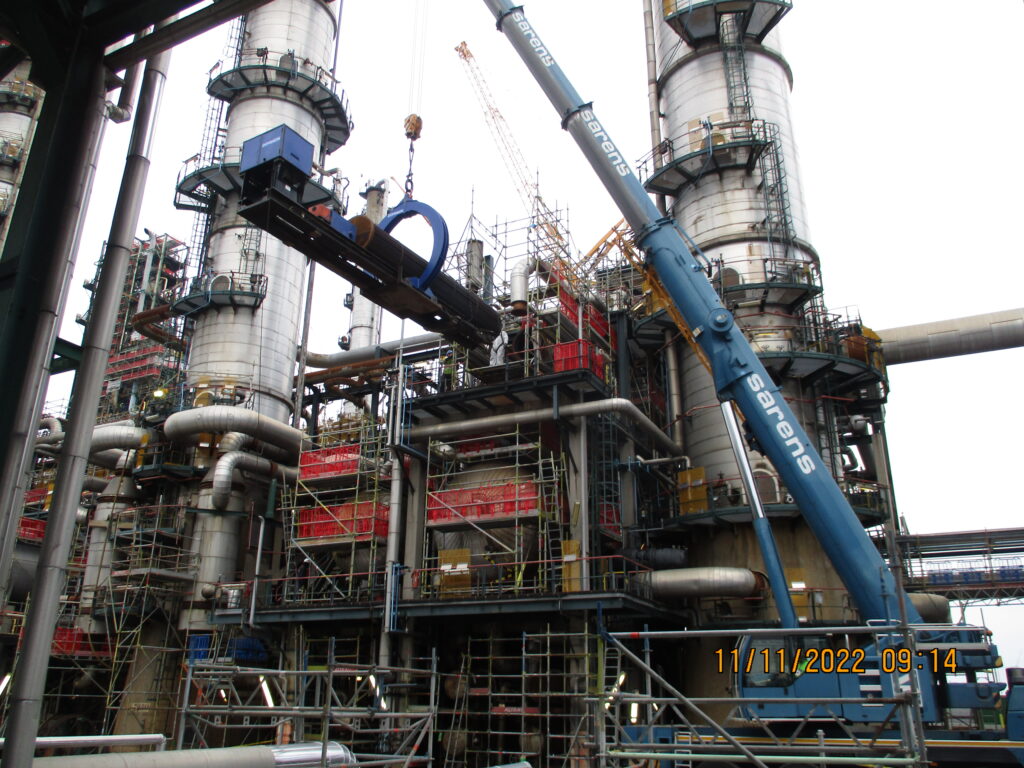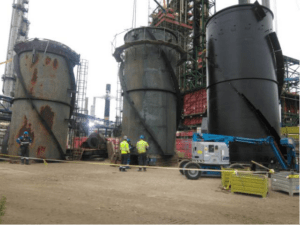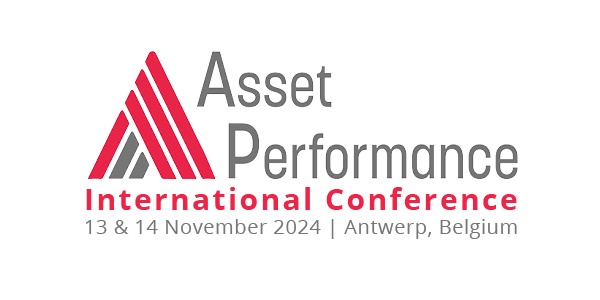TotalEnergies’ approach to shutdowns and turnarounds in an ever-changing market
In the current energy market, TotalEnergies, like all the other major energy companies, books good operating results. Previously, the coronavirus pandemic weighed heavily on the operating results but didn’t disrupt day-to-day operations or planned turnarounds and shutdowns. We spoke with Jos Vermylen, plant manager of the refinery, and José-Manuel Araujo, director turnaround.
Jos Vermylen: “However, the Ukraine war has shifted the origin of our crudes. Before the war, depending on the month, up to 50% of the crude was imported from Russia. In 2023, we won’t process Russian crudes anymore. The flexibility of the TotalEnergies refinery is sufficient to allow the processing of crudes from other origins, such as the North Sea, the Middle East, the United States or Africa.”

What defines a turnaround and a shutdown for TotalEnergies?
José-Manuel Araujo: “A turnaround is a planned stop of part of the plant, once every six to seven years, for thorough cleaning and inspection of the installations and to do modifications to optimise the installations for the next cycle. The preparation of these turnarounds is the main activity of the turnaround department. In Antwerp, in this cycle of six to seven years, we have five major turnarounds. The preparation of a turnaround takes around two years. Different teams in the turnaround department prepare different turnarounds in parallel. The turnaround itself takes only forty to fifty days. A turnaround also offers opportunities and windows to implement desired energy projects.”

“A shutdown is a planned stop of the unit between two turnarounds. This happens for instance to replace a catalyst. These planned stops are also managed by the turnaround department. Shutdowns are performed by our local partners. The preparation time required is much shorter than for turnarounds, around three months.”
“A turnaround comprises an average of around two thousand work packages. Because of the frequency of our turnarounds (five major turnarounds in seven years), a permanent organisation is in place, consisting of own staff and specialised external support. We can give this external support new assignments on a regular basis.”
Jos Vermylen: “Our own operation employees also carry out part of the preparation work. They guarantee a safe shutdown before, and safe start-up after, the turnaround. During the turnaround, they oversee all the activities which consist of isolating the installation, removing all the hydrocarbons, cleaning, inspection and any repairs.”

José-Manuel Araujo: “During a turnaround, around one thousand extra workers, employed by external contractors, come to Antwerp to carry out specific tasks. For the mechanical activities, they come from abroad, mostly from France and Poland. During their stay here they are accommodated in or near Antwerp or in the south of the Netherlands. Other activities are done with our local long-term partners, such as scaffolding, high-pressure cleaning and lifting activities. In daily maintenance and during turnarounds, our employees perform the maintenance on rotating equipment, instrumentation and electricity.”
Did you notice any effects from recent events?
Jos Vermylen: “The current public health and market conditions didn’t change our approach to turnarounds and shutdowns. We stuck to the plan, both during the Covid 19 crisis and the energy crisis. We have signed long-term contracts with our local and international partners and respect these contracts. This has proven to be a good way to keep the costs under control. It also confirms us as a reliable business partner. Developing long-term relationships with our partners and working together with them on continuous improvement is an important part of our general strategy. We can give them with new assignments on a regular base.”

José-Manuel Araujo: “Another advantage of collaborating with trusted partners is that they have built up a lot of experience with the way we work. This greatly decreases the risk of unpleasant surprises. Prior to each turnaround, together with the external contractor we make an estimate of the tasks to be performed and we set a target price. Afterwards, this estimate is adjusted on the basis of actual performance. For this, we sit down together with each external partner separately. Of course, rising inflation and material costs have an impact on the cost of a turnaround.”
Jos Vermylen: “The maintenance of our installations is the main activity of our maintenance department, in collaboration with external partners. We try to work to plan as much as possible to achieve the highest possible efficiency. Week plans are established and monitoring is in place to respect these plans as much as possible.”
Do unexpected things come to light during a turnaround?
José-Manuel Araujo: “We are prepared for this to happen. The budget includes a certain percentage for such surprises. We recently noticed that the interior of one of the chimneys had become very brittle, so we had to replace the interior. To mitigate the coronavirus pandemic, we had of course taken the necessary measures. For example, we had set up large tents with individual tables where the external employees could have lunch. Fortunately, they perform most of their tasks in the open air. We had also organized their teams in such a way that the people who worked together during the day were accommodated together.”

In 2023 a major turnaround will take place.
Jos Vermylen: “On one of the olefin plants – an installation from 1991 – we are replacing an existing turbine with an electric motor, as part of making our production park more sustainable.”
What are the opportunities and projects to be implemented you mentioned?
Jos Vermylen: “To become carbon neutral, together with society, we will transform our refinery activities. In France, two of our refineries already have switched to the production of biofuels only. Of course, oil will remain necessary also as raw material for the production of plastics. It is our ambition to use 30% of recycled plastics for the production of plastics by 2030. This can be done using two different methods. Mechanical recycling gives new polymer grains, chemical recycling results in an oil type that can be used to feed the olefins plant. We have observed that the market for recycled products is growing.”
TotalEnergies has the ambition to be net zero towards 2050, together with society. The company is investing massively in solar and wind power to become one of the top five producers of renewable energy by 2030.
What does this mean for your Antwerp sites specifically?
Jos Vermylen: “Each operational site has its roadmap for CO2 emission reduction, based upon three pillars. First of all, we go for electrification to avoid the combustion of natural gas. Therefore, we are replacing steam turbines with electric motors. Furthermore, we are working on operational excellence to reduce energy consumption and CO2 emissions and on the implementation of several energy-efficiency projects. On top of the existing initiatives, TotalEnergies has launched a worldwide acceleration plan for energy saving.”
José-Manuel Araujo: “One of the projects we are developing in Antwerp concerns the underground storage of captured CO2 in empty gas fields under the North Sea. It aims to reduce our CO2 emission by over 50% over the next ten years, in line with Europe’s ‘fit for 55’ programme. This is a common project of the Antwerp harbour community. The capture and storage of CO2 and in the long run its use as a raw material for different applications – such as the production of methanol – are considered important steps in the transition towards a carbon-neutral society.”
About TotalEnergies
TotalEnergies uses naphtha, butane and ethane, by-products from the refinery and additionally bought, as raw materials for the steam cracker. They are forced through the cracking furnace at high speed, mixed with steam and heated to 850 °C. This cracks the molecules and converts them into a range ofvarious light products. The gas stream is then cooled to between 130 and 170 °C in a fraction of a second and then passed through a series of distillation towers, where the gases are separated from each other. The main end products are ethylene and propylene. The heavier products are further converted into useful aromatic hydrocarbons, such as benzene and toluene in the aromatics unit.
The French group TotalEnergies performs its activities at three separate sites in the Antwerp Harbour area. One site is dedicated to the refinery, another to the production of olefins and polymers are produced at the third site. The current situation is the result of several decisions, take-overs and mergers in the past. This history started in 1949, when the Belgian Petrofina and the Anglo-Iranian Oil Company (afterwards renamed BP) joined forces to develop a common plant in Antwerp. The chemical activities began in 1958, when Petrochim started to use the petroleum gases from refineries in the harbour area to produce ethylene and propylene.
Today, with its 1,306 workers, the refinery processes around 16 million tonnes of crude per year at its 32 production installations. It delivers 70 finished products. It has 148 storage tanks on the 210-hectare site. The olefins plant covers 60 hectares. It employs 293 people and produces about 1.15 million tonnes of ethylene, 210,000 tonnes of aromatics and 575,000 tonnes of propylene each year. The olefin plant is also responsible for the management of a chemical products pipeline between Antwerp and Feluy, near Charleroi. The polymers plant produces 45 different types of polyethylene on three production lines. One of the six extruders is only used to recycle high-density polyethylene. This site covers 30 hectares and employs 161 people.
TotalEnergies is an integrated group. Its activities range from energy generation to energy distribution and related services. For example, in the summer of 2022 it was selected by the Flemish government for the installation and commercial operation of 4,400 charging points for electric vehicles along public roads in Flanders. They will be powered by electricity generated by wind turbines in the Belgian part of the North Sea.
In numbers
Harbour of Antwerp, Belgium
Site 1: refinery
- 210 hectares
- 1,306 employees
- 16 million tonnes of crude processed per year
- 70 finished products
- 32 production installations
- 148 storage tanks
Site 2: production of olefins
- 60 hectares
- 293 employees
- production of 1,150,000 tonnes of ethylene per year
- production of 210,000 tonnes of aromatics per year
- production of 575,000 tonnes of propylene per year
Site 3: production of polymers
- 30 hectares
- 161 employees
- production of 45 different types of polyethylene
